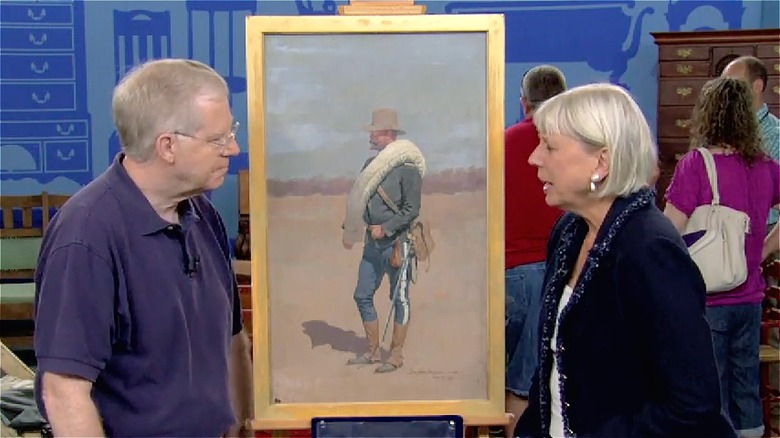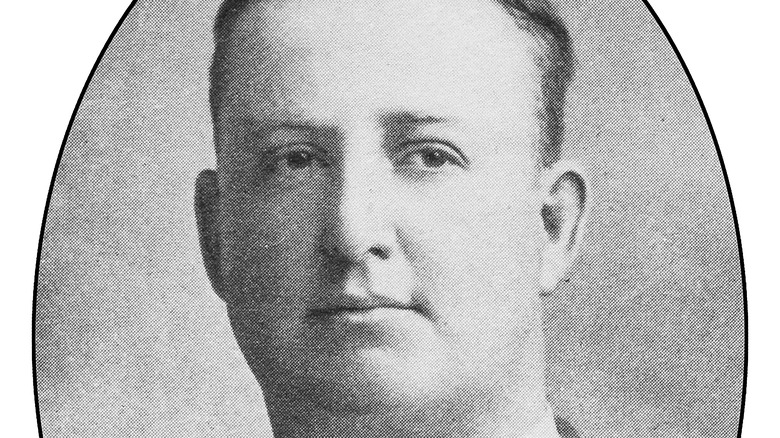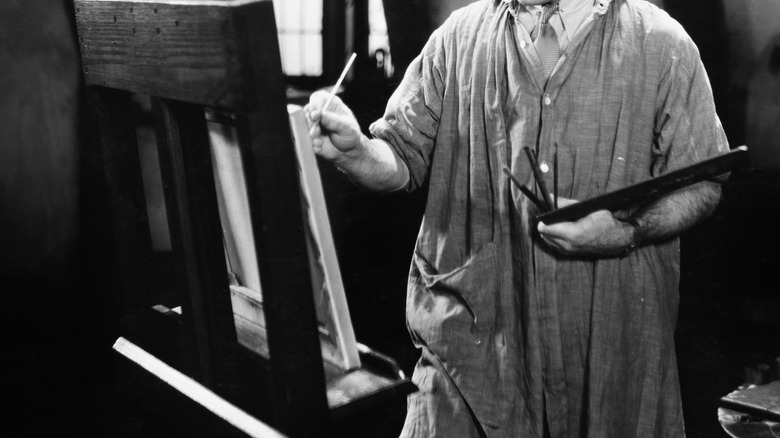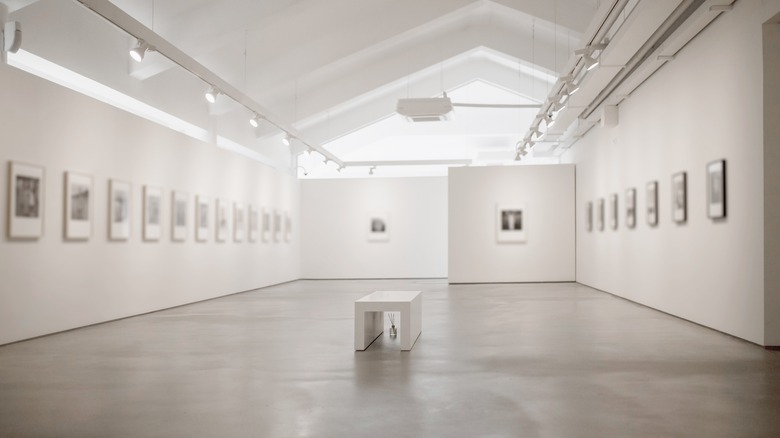What Happened To The Expensive Frederic Remington Oil Painting From Antiques Roadshow?
The painter Frederic Remington headed down to Eagle Pass, Texas. It was January 1896, and U.S. Army Captain Lea Febiger had invited him to go duck and quail hunting across the border in Mexico. "As we got down from the train we saw Captain Febiger in his long military cloak by a lantern light," Remington recalled in his 1898 book "Crooked Trails." While the duck hunting was a bust and the quail only marginally better, the painter did produce an outstanding portrait of the captain during that trip, per the Express and News.
Nearly 120 years later, Febiger's great-grandson, Charles "Ty" Dodge, went to a taping for the PBS series "Antiques Roadshow" in Birmingham, Alabama, in June 2014. Dodge brought along Remington's painting and a letter from the artist to Febiger. He had no idea how much it was worth. "So when the appraiser at the 'Roadshow' said the painting and the letter together would be worth about $600,000 to $800,000, frankly, I was pretty shocked," Dodge told AL.com. Dodge, after getting over his shock, loaned the painting to the Birmingham Museum of Art, where it hangs today. But there's more to the story of this valuable Remington painting that involves the Frederic Remington Museum in Upstate New York and forged artwork.
The painter's friend
Frederic Remington (above) was born in Canton, New York, in 1861 and grew up in nearby Ogdensburg. He attended military school per the wishes of his Army colonel father, but he preferred drawing soldiers to becoming one. After several failed ventures, he became a successful artist. According to Boston-based art appraiser Colleene Fesko (via PBS.org), he's considered "one of the most important Western artists of the turn of the century." "He didn't have a tremendous amount of training, but a natural instinct for the vitality and the style of the West," she continued.
His friend, Captain Lea Febiger, was born in 1858, and during his military career he was in charge of the Army's aid efforts in San Francisco in the wake of the 1906 earthquake. He died there in 1920. Remington painted his friend as the ideal infantryman as part of a series of works depicting the various branches of the U.S. Army. The Frederic Remington Art Museum in Ogdensburg eventually ended up with the painting until they traded it in a deal with Febiger's family in 1938.
A shocking discovery
After the episode featuring Charles Dodge and his pricey Frederic Remington painting aired at the end of March 2015, a shocking discovery came to light. Laura Foster, the director of the Frederic Remington Art Museum at the time, uncovered documents that revealed the two Remington illustrations that the museum traded for the painting of Captain Lea Febiger were fakes. "We don't know if anybody in this chain — except the maker — ever knew that these were not legitimate Remingtons," Foster told AL.com.
The deal between the museum and Dodge's grandmother, Frances Febiger Marrack, involved her purchasing one of a set of two large illustrations for the equivalent of more than $10,000 today, with the museum buying the matching artwork and then giving her the Remington painting. The paired works were from a legitimate art dealer in Boston and weren't discovered to be fakes until the early 1970s. Foster connected all the dots after learning about the "Antiques Roadshow" episode. Dodge, who inherited the painting in the 1960s, believes the portrait of his ancestor ended up "in the place that it ought to be, though I am sad for the Remington Museum that they ended up with a forgery in process."
Back in a museum
Back in 1938, the Frederic Remington Art Museum had valued Remington's Lea Febiger portrait at $100, the equivalent of a little more than $2,000 today. The next time it was appraised — sometime in the 1960s, according to Charles Dodge — the value had gone up to $7,500. But as Remington's reputation and the value of his art continued to grow, the portrait's worth had ballooned by 2015. For years the painting hung on a wall in Dodge's living room. "He really is an iconic figure in American painting," Colleene Fesko said during the "Antiques Roadshow" episode. "And this piece with the very dashing figure, the beautiful shadow, the abstracted landscape behind, is really a wonderful example of Remington's work at the turn of the century."
Although the Remington Art Museum lost a painting, another museum gained one. Dodge has loaned his painting to the Birmingham Museum of Art, where it can still be seen amid a growing collection of Remington's other work, including his sculptures. "I just thought that would be a great place to let others see it, as well," Dodge said.



